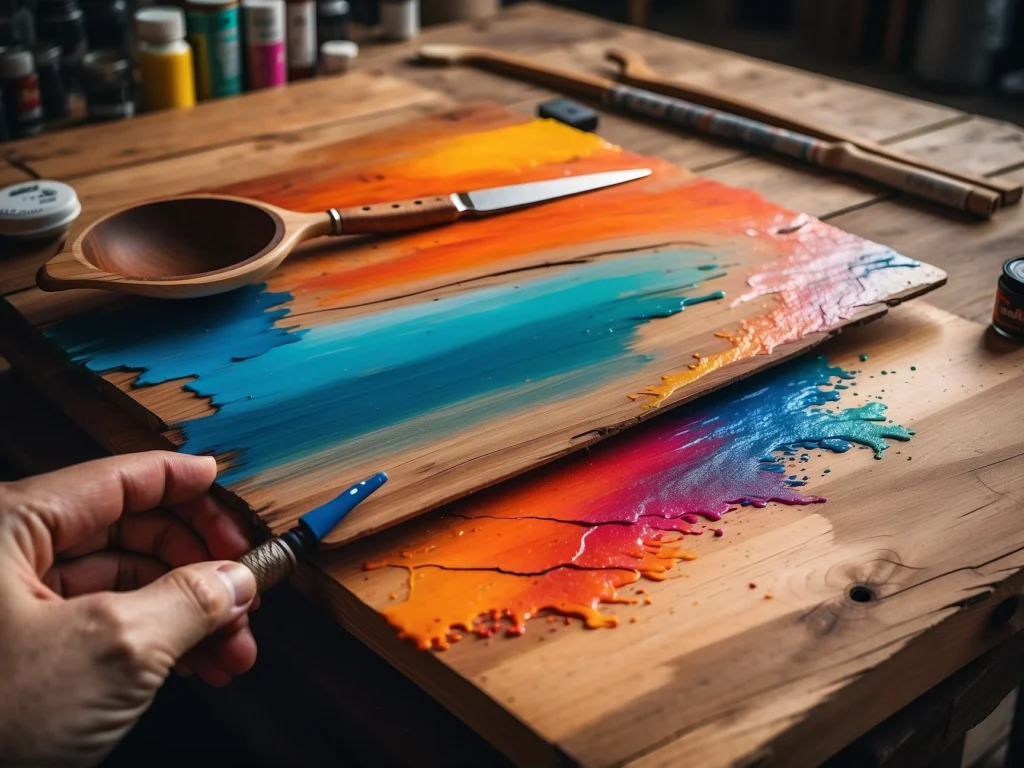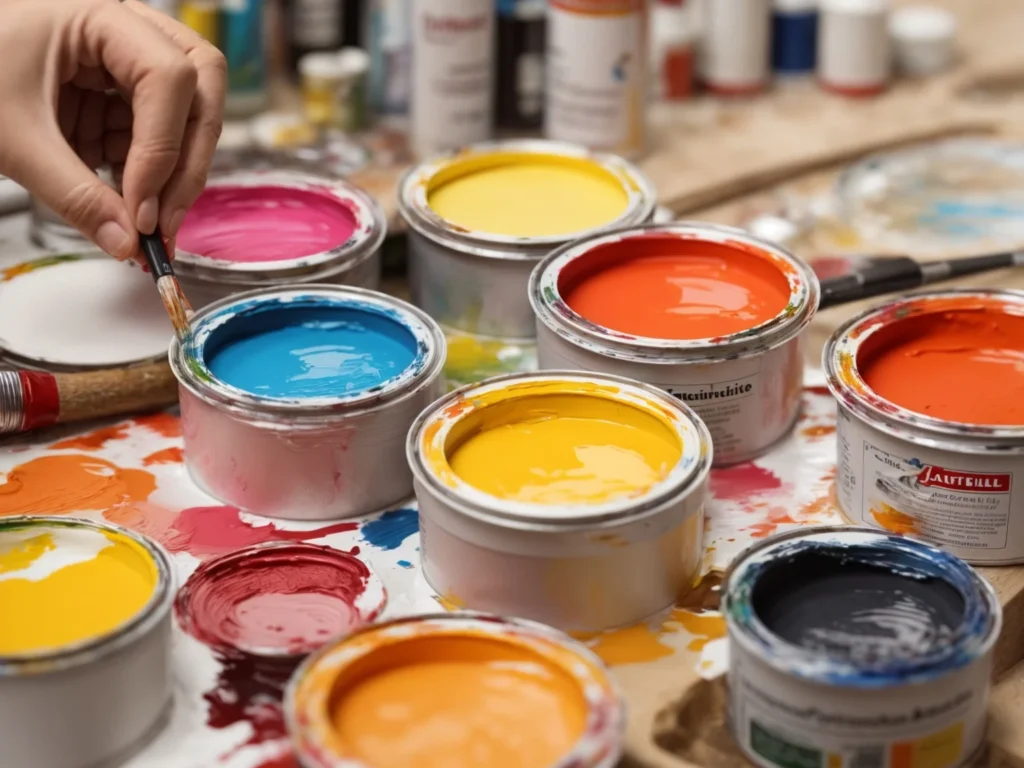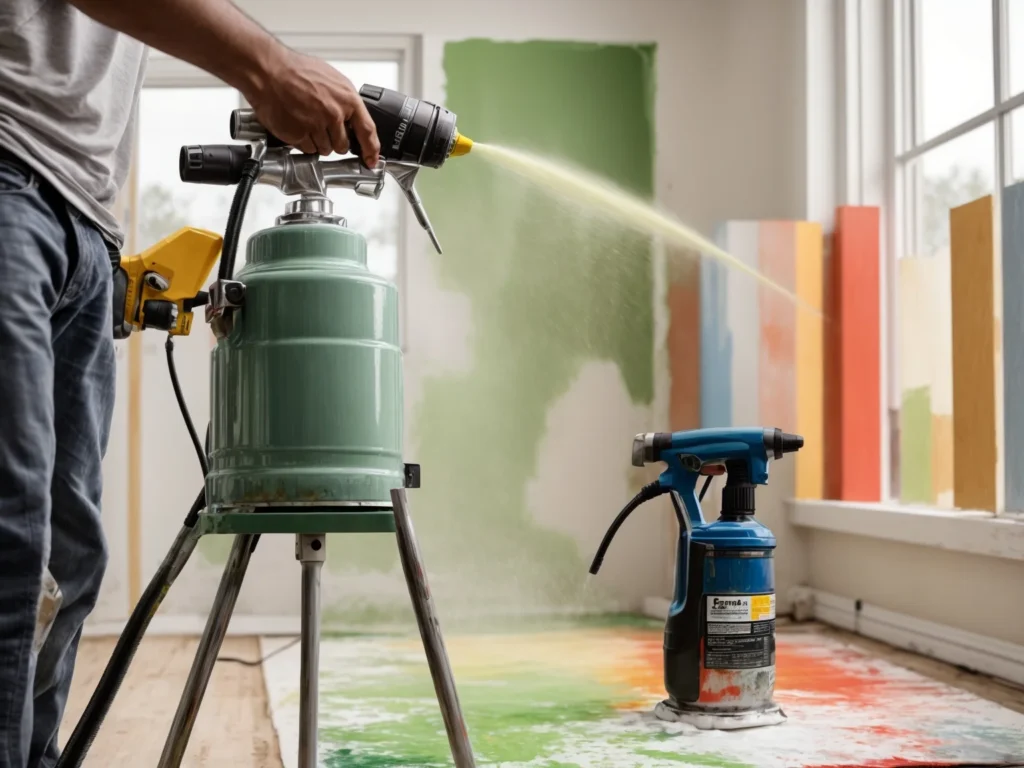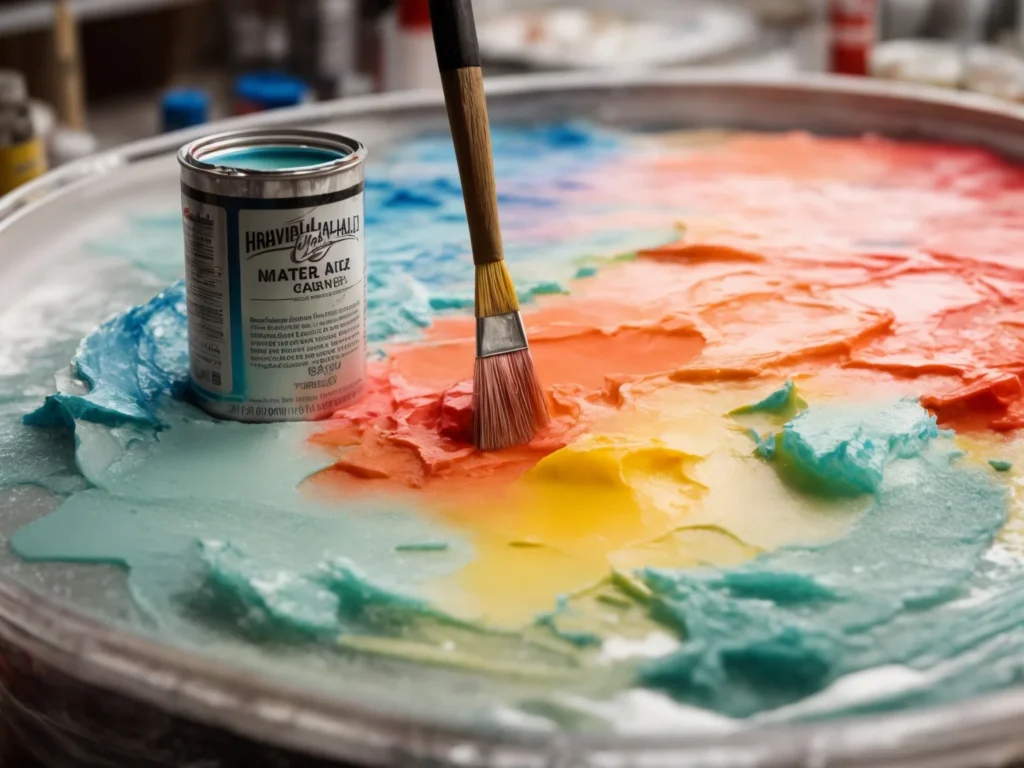If your gas meter is looking worn out or rusty, you may be wondering if giving it a fresh coat of paint would help improve its appearance. Painting a gas meter is allowed in many cases, but there are important guidelines to follow for safety and compliance with utility regulations. Doing it right ensures your gas meter remains functional while blending in better aesthetically.

Understanding Gas Meter Painting Regulations
Before pulling out the paint cans, it’s crucial to understand the legal considerations involved in painting natural gas meters. These devices are utility company property, so you can’t just paint them however you wish. There are rules and restrictions in place for safety reasons.
Local Utility Company Guidelines
Natural gas providers often have specifications on painting meters, including allowed colors and procedures. Many require advance permission before homeowners can paint meters or boxes, so check your local utility company’s policies. Violating them could result in fines.
Some utilities allow DIY gas meter painting while others require hiring professional painters they authorize. Contact your gas company to find out their particular guidelines. They will advise if your meter can be painted and by whom.
Safety Regulations
Gas meters have important gauges, valves, and markings that must remain fully visible for utility workers. Painting over these essential components can create serious safety hazards and is prohibited.
Also avoid using paint or coating types that could emit flammable fumes and ignite from meter sparks. Stick with high-quality exterior grade paints from reputable brands, applying them carefully around meter components.
Visibility of Meter Markings
It’s crucial that all meter details, including the meter number, pressure readings, brand information, and any warning labels remain unobstructed after painting. Avoid painting over valves or other fittings. Confirm with your utility that your paint job preserves full functionality.
Ventilation Needs
Never seal up a meter completely behind boards or covers without proper ventilation gaps. Meters release exhaust gases that need to ventilate outdoors. Restricting airflow around a meter is extremely hazardous.
Choosing the Right Paint and Technique
Picking the optimal paint for gas meters requires exterior grade formulations. For the best adherence and durability, oil-based paints and primers work well on metal gas meter surfaces. Proper application techniques also matter.
Oil-Based Primer and Paint
Outdoor metal surfaces benefit from oil-based coatings rather than latex acrylics. Rust-inhibiting primers containing rustoleum provide great adhesion on iron, steel, and other metals. An oil-based satin, semi-gloss, or gloss topcoat offers durability.
High-quality oil-based options like Rust-Oleum CombiColor and Krylon Industrial also deliver excellent UV and weather resistance. This prevents future rust and peeling. Proper curing time between coats is essential for longevity.
Application Techniques
Use sandpaper, steel wool, or other abrasives to roughen and degloss the meter surface for painting. Apply thin layers of primer and paint using smooth brush strokes. Avoid drips or runs which can impair function. Allow proper drying time before adding topcoats.
Applying paint with high-volume, low-pressure (HVLP) spray equipment delivers an evenly atomized professional finish. This requires tenting off the area to control overspray.
Matching Exterior Home Colors
Consider selecting a gas meter paint color that matches or complements your home’s exterior color palette. This helps the meter blend in better rather than clashing. Just ensure the color is light enough for meter markings to remain visible.
Avoid painting your gas meter bright or neon colors that would make it an eyesore. Neutral gray, black, navy, dark green, brown, and other earthy tones tend to integrate best with most home exteriors and landscapes.
Maintaining Visibility and Functionality
When painting a gas meter, it’s absolutely vital to preserve visibility of important components that utility workers must access. Certain paint colors also hinder legibility.
Leave Valves and Gauges Unpainted
Ensure that meter control valves, bleeder valves, pressure gauges, and turnover dials are not painted over. Mask these off with painters tape if needed. Avoid spraying paint directly on these components.
Choose Light Paint Colors
Darker paint colors can reduce the legibility of dials and warning labels. Semi-gloss or glossy medium to lighter tones allow markings to be clearly visible. Gray, beige, cream, and lighter earth tones work well.
Can I Paint My Gas Meter White?
White can be an acceptable gas meter color as long as it is not too bright. Softer white and off-white tones provide visibility without being glaring. A gloss or semi-gloss sheen is easiest to keep clean. Just avoid painting over text or markings.
Maintain Access Points
Never paint gas shut-off valves themselves, and keep the area immediately surrounding the valve clear. Utility workers must be able to quickly access the gas shut-off in emergencies or for service work.
Preparing the Gas Meter for Painting
Achieving great results painting your gas meter requires proper surface prep just as with any other paint job. Cleaning and abrading the surface helps paint adhere.
Remove Loose Paint and Rust
Use a wire brush attachment on a power drill to scrub away all flaking or peeling paint. Remove any surface rust, ideally by abrasive blasting for heavy rust. Wipe down with denatured alcohol to remove grime.
Scuff Sand the Surface
Lightly scuff sand the meter casing using 220-400 grit sandpaper to rough up and degloss the surface. This helps the new paint bind tightly. An orbital sander makes quicker work of smoothing and abrading larger meter surfaces.
Clean Surfaces Thoroughly
Pressure wash the gas meter to remove all dirt, grease, oil, and chalky residue. Let the metal dry fully. Wipe down again with denatured alcohol just before painting for best results.
Mask Off Components
Use painter’s tape to mask off valve handles, pressure gauges, and instruction decals that shouldn’t be painted. This protects visibility and functionality. Remove tape immediately after painting.
Apply Rust Inhibiting Primer
Once prepped, apply 1-2 thin coats of exterior metal primer formulated to halt rust and improve paint adhesion. Allow proper drying time before adding topcoats.
Painting Gas Meter Boxes and Bases
In addition to the meter itself, the surrounding metal housing box or base can also be painted to refresh its appearance. Proper prep and masking is key for a pro-level finish.
Can I Paint My Gas Meter Box?
The metal housing surrounding a gas meter can absolutely be painted just like the meter itself, provided you follow utility guidelines. Use the same oil-based paints and meticulous surface prep for great results.
Tape off the meter, valves, gauges, and all other components before spray painting the box enclosure for the most professional finish. Allowing overspray onto the meter components can impair functionality.
Can I Paint My Meter Base?
For gas meters on concrete or masonry bases, it is also fine to paint the bases while avoiding spraying the meter itself. This helps the meter blend in rather than clashing against a stained base.
Use exterior masonry paints and primers designed for use on concrete, stucco, brick, and other masonry materials. Properly mask off the meter first for best results.
Covering Gas Meters: Risks and Alternatives
To help a rusty gas meter blend in better with home exteriors, some homeowners consider covering them rather than painting. But fully enclosing meters can be very hazardous. There are safer alternatives.
Is it OK to Cover a Gas Meter?
It is never advisable to fully seal off a gas meter behind boards, covers, or siding without proper ventilation. Gas meters release exhaust gases that require adequate airflow. Covering also inhibits access and visibility.
Enclosing a meter can also trap moisture between the cover and the meter surface leading to accelerated rusting. Any covers should have spacers or louvers for ventilation and drainage.
Risk of Moisture Trapping
Direct contact with moisture is one of the primary causes of rust and corrosion on gas meters. Enclosures that prevent air circulation allow humid air and water to get trapped against the meter casing. This quickly damages the metal.
Adequate ventilation and drainage are vital for covered meters. Professional meter concealment boxes have louvers and gaps specifically for this purpose. DIY covers often lack sufficient venting.
Allow Access to Components
Covers should be designed for easy removal so utility workers can quickly access the full meter and valves in case of emergency shut-off needs. Screws or removable panels enable quick access compared to more permanent coverings.
Try Landscaping Instead
Rather than attempting to cover up an ugly meter, consider screening it with strategic landscaping such as shrubs, trellises, or an arbor. This hides the view while still allowing open air access to the meter.
Professional Painting Services by Gas Providers
Some utility companies offer professional painting services for old rusty gas meters they own and maintain. This ensures proper regulations and methods are followed.
Free Painting by Utilities
For very old or badly rusted meters, your local gas company may paint them for free as part of their equipment maintenance. Contact them to inquire about meter painting programs.
Utility workers are trained in proper prep methods, paint selection, application, and visibility requirements. They know how to preserve full meter functionality.
Hiring Approved Professionals
If DIY painting is not allowed in your area, the gas company may provide referrals for licensed professionals they permit to paint meters. Rates are often reasonable.
Approved painters are familiar with equipment specs and regulations. They carry insurance covering any errors that lead to utility fines or hazards. Professional painters also have commercial-grade tools and lifts for tall meters.
DIY Painting: Precautions and Tips
In areas where DIY gas meter painting is permitted, homeowners can refresh their meters with some careful planning and preparation.
Assume Risk of DIY Painting
When undertaking DIY gas meter painting, you assume liability for any errors leading to blocked components, damage, or violations of utility rules. Professionals carry insurance against such risks.
Use extreme care when painting near any meter valves, tubes, gauges, or markings. Prioritize visibility and functionality over cosmetic improvements.
Work Safely At Heights
Use proper ladders and scaffolding rated for your weight when painting tall exterior meters. Never lean ladders against the meter itself. Wear painters harness for working over 6 feet high.
Avoid Spray Painting Near Meter
It is best to use brushes to carefully apply primer and paint only on the metal surfaces that need it. Avoid spray painting near the meter which can blast paint onto components.
Let Paint Fully Cure
Allow several weeks before reattaching any protective covers to newly painted meters. This gives paint time to fully cure so covers don’t stick to paint. Test paint hardness before covering.
Protecting Your Gas Meter from Weather Damage
Aside from improving appearance, painting your gas meter also helps protect the metal casing from further wear and rust damage. Just be sure to maintain the paint properly.
Prevent Rust and Corrosion
Quality primer and paint form a protective barrier preventing moisture from reaching the bare metal meter surface. This stops rust from forming as long as the paint remains intact.
Look for exterior paints offering “rust enameling” for the longest lasting rust prevention on iron and steel gas meters.
Withstand Sun and Rain
Exterior grade oil-based paints are formulated to withstand sun, rain, snow, and temperature extremes. The UV-resistant resins prevent paint fading or breakdown from sun exposure.
Long-Term Maintenance
Repaint gas meters whenever paint becomes faded, chipped, or cracked to maintain rust protection. Spot paint any nicks or scratches as soon as they appear to prevent corrosion spread.
Conclusion
Refreshing a worn, rusty gas meter with a fresh coat of paint can certainly help improve its appearance. But due to safety considerations, it’s essential to follow all regulations set by your local gas utility before painting meters, boxes, or bases. With proper precautions, surface prep, and paint choices, a painted meter can blend in beautifully with your home’s exterior while remaining fully functional for years to come. Contact your natural gas provider for guidance to ensure your project goes smoothly from start to finish.





